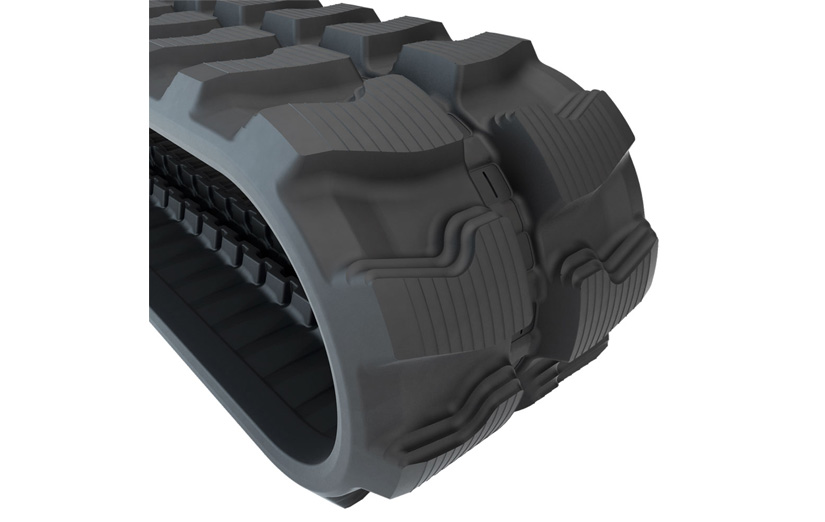Rubber tracks play a crucial role in the performance and efficiency of excavators. They provide the traction and stability required for various operations, making them indispensable for excavators in construction, agriculture, and other heavy-duty applications. This guide focuses on replacement rubber tracks for different excavator models and brands, offering insights into their importance, selection, installation, and maintenance.
Understanding Excavator Rubber Tracks
Rubber tracks are made from high-quality rubber compounds and reinforced with steel cables or fibres to enhance their strength and durability. They are designed to provide a smooth and stable ride, reduce ground pressure, and minimize surface damage. The technology behind rubber tracks includes advancements in tread patterns and materials to optimize performance in various conditions.
Compared to traditional steel tracks, rubber tracks offer several benefits:
- Reduced Vibration and Noise: Rubber tracks absorb shocks better than steel tracks, leading to a quieter and smoother operation.
- Surface Protection: Rubber tracks are gentler on surfaces, reducing the risk of damage to paved roads, lawns, and other sensitive areas.
- Versatility: Rubber tracks perform well in diverse environments, from muddy and soft terrains to rugged and rocky surfaces.
Why Choose Replacement Rubber Tracks
Maintaining the performance of your excavator involves regularly checking and replacing worn-out tracks. Quality replacement rubber tracks are essential for several reasons:
- Performance: Worn tracks can significantly reduce the efficiency and effectiveness of an excavator, leading to increased fuel consumption and longer job completion times.
- Safety: Damaged or excessively worn tracks can compromise the machine’s stability and safety, posing a risk to the operator and the job site.
- Longevity: Regularly replacing tracks ensures the excavator’s longevity, preventing additional wear and tear on other components.
Selecting the Right Rubber Tracks for Your Excavator
When choosing replacement rubber tracks, consider the following key factors:
- Size: Ensure the tracks are compatible with your excavator model. Check the specifications provided by the manufacturer.
- Tread Pattern: Different tread patterns are designed for various applications and terrains. Choose a pattern that suits your typical working conditions.
- Brand Compatibility: Select tracks from reputable brands known for their quality and reliability. Many offer a wide range of options tailored to different needs.
To assess track quality and durability:
- Material Composition: Look for tracks made from high-quality rubber compounds with reinforced steel cables or fibres.
- Warranty: A good warranty indicates the manufacturer’s confidence in their product’s durability and performance.
- Reviews and Recommendations: Consult reviews and seek recommendations from other operators or experts in the field.
Installing Replacement Rubber Tracks
Installing replacement rubber tracks involves several steps:
- Preparation: Ensure the excavator is on a flat, stable surface. Lift the machine using appropriate lifting equipment.
- Removal: Remove the old tracks carefully, ensuring they do not damage the undercarriage.
- Inspection: Check the undercarriage components for wear or damage and replace any parts if necessary.
- Installation: Fit the new tracks according to the manufacturer’s instructions. Ensure proper alignment and tension.
Professional installation is recommended to ensure optimal performance and safety. Consulting with experts can help avoid common pitfalls and ensure the tracks are installed correctly.
Maintaining Your Rubber Tracks
Routine maintenance is essential to extend the lifespan of your rubber tracks and ensure they perform optimally:
- Regular Inspections: Check the tracks often for signs of wear, damage, or embedded debris.
- Cleaning: Clean the tracks after use, especially if used in muddy or snowy conditions, to prevent buildup that can cause wear and reduce traction.
- Proper Tension: Ensure the tracks are correctly tensioned. Follow the manufacturer’s guidelines for the appropriate tension settings.
FAQs About Replacement Rubber Tracks
How long should replacement rubber tracks last?
The lifespan of replacement rubber tracks varies depending on usage, terrain, and maintenance. On average, rubber tracks last between 1,200 to 1,600 hours of operation. Factors such as operating conditions and maintenance practices can significantly impact their longevity.
Can I install replacement rubber tracks on my own?
While it is possible to install replacement rubber tracks yourself, it is recommended that you seek professional assistance. Proper installation is crucial for optimal performance and safety, and professionals have the expertise and tools to ensure the tracks are fitted correctly.
How do I know when it’s time to replace my excavator’s rubber tracks?
Significant wear on the tread, visible cracks or cuts in the rubber, loss of traction, and difficulty maintaining proper tension are indicators that it’s time to replace your rubber tracks. Regular inspections can help identify these signs early, allowing for timely replacements.
Ensure Optimal Performance with the Right Rubber Tracks
Choosing high-quality replacement rubber tracks is essential for maintaining and enhancing your excavator’s performance. By selecting the right tracks and ensuring proper installation and maintenance, you can optimize your machine’s efficiency, safety, and longevity. For expert advice and a wide selection of replacement rubber tracks tailored to various excavator models, contact Tag Equipment. Our knowledgeable team can help you find the perfect tracks to meet your needs and ensure your excavator operates at its best.


